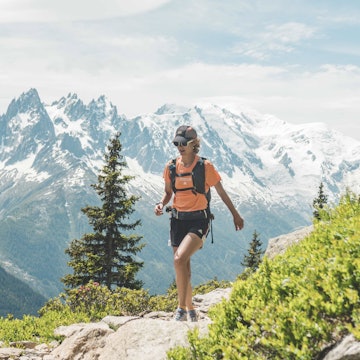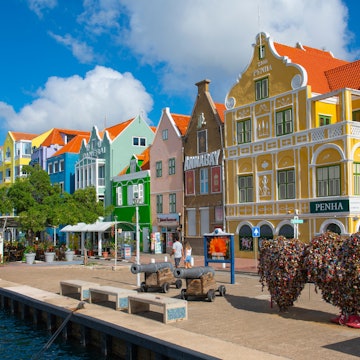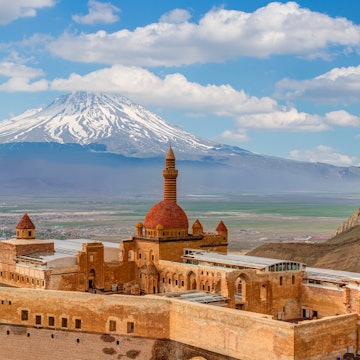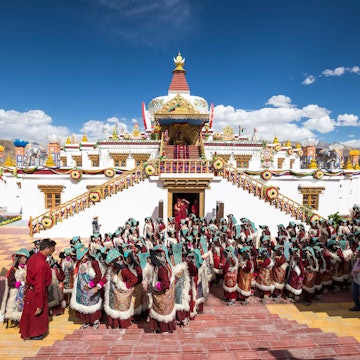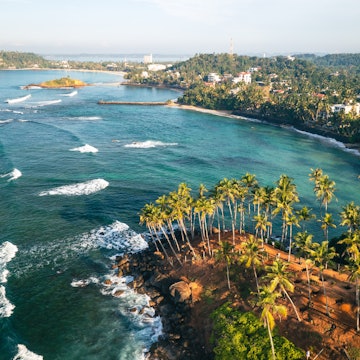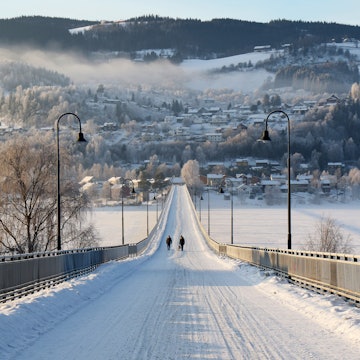
Ready for a new challenge? These are the 10 best peaks for beginner mountaineers

Nov 4, 2021 • 5 min read

There's nothing quite like reaching the summit of a really tall mountain, like Kilimanjaro. Shutterstock
Mountains not only request, but demand respect. With feet of snow, hurricane-like winds, little oxygen and their own weather, it’s remarkable we get windows into their world at all. Some are still unclimbed, others invite us in.
If you are physically fit but just starting out as a mountaineer here are a few ‘fourteeners’ – mountains higher than 14,000 feet (4,267 meters) – to get you started for your first big climb. These summit attempts should not be attempted without proper safety precautions. All of these mountains can be summited by first-timers, but we recommend the assistance of a guide with proper training and experience.

Mount Whitney, California: 14,505ft
It's the highest peak in the continental US, but a trail takes you to the top. A permit is required to hike the trail and you’ll need to participate in a raffle to get one. However, for anyone who wants to start climbing and sharpen their skills, Whitney is a winner.
What to bring: Water. Unbelievably, there is no water on the mountain. You are exposed the entire hike up. Besides altitude sickness, dehydration is a serious threat to climbers.
Pikes Peak, Colorado: 14,115ft
As far as scaling mountains go, it doesn’t get any easier or more accessible than Pikes Peak in Colorado. A 13.5-mile trail takes you up 7400 feet to the summit. Once there, you’re greeted with a road, a train and 500,000 other visitors each year. There is no other 14er with the ease and safety margin of Pikes.
What to bring: A water purifier. There is water along the trail, but it needs to be sanitized before you take a sip. Again, dehydration is a killer with altitude.
Mount Kilimanjaro, Tanzania: 19,341ft
Tickling the 20,000-foot (6,000 meters) mark, it may be a surprise to some that this mountain is even on our list. Rest assured – altitude is the greatest challenge on this mountain. Located in northeast Tanzania, Mount Kilimanjaro can be hiked without setting foot on ice or snow. A guide is required and it will take you up to a week to reach the summit but to say you climbed Africa’s highest peak is on many climber’s bucket list.
What to bring: Your wallet. In order to scale Kilimanjaro, you're going to need to break bank (average costs to climb hover between $2000 and $6000 depending on the guide). But the money goes to the experienced guides and Kilimanjaro National Park to keep the mountain and wildlife pristine.

Mount Kenya, Kenya: 17,057ft
After ascending Kilimanjaro, why not jump across the border and tackle Africa’s second-highest peak? Mount Kenya, skyrocketing to more than 17,000 feet, may be lower than Kilimanjaro, but it’s more challenging. With a couple of different routes up this massif, the path you choose is up to you. Once you get there, the views are worth the effort.
What to bring: Camping gear. No matter which route you take, it will consist of a multi-day ascent. With permits and guides in tow, a tent, sleeping bag and pad are all necessary for this summit.
Pico de Orizaba, Mexico: 18,490ft
Mexico’s highest peak, Pico de Orizaba is a beautifully shaped cone piercing the heavens. Although the climb is relatively simple, a guide is highly recommended as well as plenty of time to tackle its summit. Stay at the hut, wake up at the crack of dawn and make your way up North America’s third-highest peak.
What to bring: Physical stamina and a week or two’s worth of acclimatization training. It is highly recommended you do a few hikes up to altitude in training for the summit.
Volcán Cotopaxi, Ecuador: 19,347ft
Sitting on the equator, it’s phenomenal that a mountain shooting past 19,000 feet exists at that latitude. Cotopaxi is a dormant volcano with a perfectly shaped cone to scale. With some mixed climbing that necessitates the use of ice axes and crampons, this challenging summit will test your lungs en route to the top.
What to bring: Some experience and a camera. A guide is required to attempt a summit, but with economical and experienced adventure packages, the only thing you’ll have to worry about are the photos you take from the summit.

Mount Rainier, Washington: 14,410ft
Mount Rainier is such an iconic setting it has its own National Park. Though it barely breaks the 14,000-foot mark, this active volcano throws more challenges than many of the other peaks on the list. But with all the necessary preparation, the climb is nothing short of spectacular.
What to bring: A portable stove. You must melt snow for your drinking water, so a Jetboil is of utmost importance when climbing Rainier.
Mont Blanc, France: 15,781ft
Europe’s second-highest peak, the massif of Mont Blanc is a prominent fixture. Though the climb to its summit is no cakewalk, a guided trip up will be achievable by most with proper fitness. Make sure to plan ahead as recent regulations have been put in place to limit overcrowding on the mountain.
What to bring: You will need a backpack of gear ranging from trekking shoes to ice axes, rope and crampons. This mountain will demand every type of climbing.

Island Peak, Nepal: 20,305ft
With what has been dubbed, ‘the easiest 20,000-foot mountain in the world,’ Island Peak will undoubtedly test your lung capacity. You won’t just be walking up its face, the use of crampons and ice axes are still required. However, it can be climbed by almost anyone who wishes and acclimatizes appropriately.
What to bring: Any remedy for altitude sickness. These could be used for every climb on the list, but at none other than Island Peak is it absolutely necessary.






